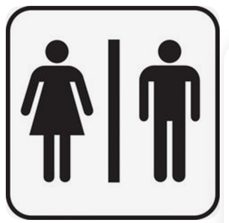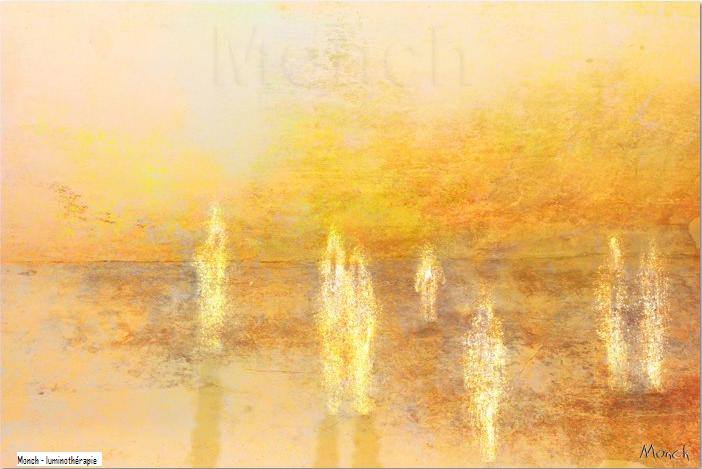Close Encounters of the Third Kind of Facilities

Moving to Europe in my early teens was an enormous transition. In the 1970s we were not living in a “global village”, and things still varied tremendously from country to country.
One significant adjustment that was required every day — indeed, multiple times daily — was using the toilet.
Such a universal function and yet it could be so disconcertingly different from place to place. My first encounter with an unfamiliar toilet occurred shortly after arriving in Italy. My parents and I were having dinner in a very nice and very fancy restaurant when it became necessary to visit the bathroom. I glanced at the door which would have had a written sign (signori or signore — this I already knew), or some gender-indicative stick figure. I opened the door, stepped in, and to my horror thought I was in the wrong place. There was a sort of porcelain platform that straddled a hole in the ground. Surely I was in the men’s room. I had never seen anything like this, so thought (remember, I was young) this must be what men did. I whirled back out, checked the door, and sure enough there was a figure of a woman on it. Convinced that someone had switched the signs, I opened the door with the male sign on it, and once again I found the same set up.
Totally confused, I retreated back to the women’s room, and got on with the business at hand.
Some places had only one toilet, shared between men and women (including the rather upscale office where I worked for some time). Where the facilities were unisex, the toilet was always the porcelain hole in the ground.
In lesser establishments, sometimes it was a hole in the ground with wooden planks to stand on either side. In seriously lesser locales, there was just a hole in the dirt.
Completely uncomfortable with the whole subject, I never asked anyone a question that disturbed me for a very long time: Which way were you supposed to face? If you faced the door, sometimes you could hold on to the door handle — a particularly useful maneuver if your task required more than a few moments of time. But what if that was wrong? What if someone pulled on the door from the other side and this movement caused you to slip?
In any case, I grew to prefer the non-porcelain variety; dirt doesn’t splash droplets upwards on your shoes.
But Italy wasn’t the only country with unusual facilities. Austria, the former Yugoslavia, and Bulgaria had seated toilets but with a difference. The typical North American or European toilet has the drain at the back (the place where the flushed water goes) and positioned directly beneath your buttocks. In these other countries, the drain was at the front of the toilet. What was directly under your bum was a sort of platform, just at the water line. Whatever you produced would plop onto this shelf-like area, and I thought it seemed to be an observation platform of sorts. What mentality created this? Was there some sort of strange cultural fixation where one felt the need to closely inspect one’s excretions, un-obscured by depth or water? Did it have something to do with the Austro-Hungarian Empire?
Moving further east, Turkey also had the observation platform but with an added accessory. When turned, a little handle would release a powerful jet of frigid water out a small fixture aimed directly at your posterior. It was something like a bidet inside the toilet. In one Turkish bathroom, the tap to the toilet-bidet was on the wall near the sink so I decided it would be puckish to suddenly and without warning turn it on full force whilst my husband was calmly seated. He shot up like a missile and I couldn’t stop laughing for hours.
In Tunisia, I stopped for tea at a small desert village. The hose that was used to swish the toilet hole, the hose that was left languishing deep inside the dirt hole itself, was the source of the water for tea. I was very thirsty, and the water would be boiled, so… I was brave, polite, and had tea. The tea was refreshing and delicious, and I never became ill.
I’ve since read that squatting is a more natural position. Supposedly it allows for more successful elimination and aids in balance and leg strength. I can certainly vouch for the latter two advantages. But you can’t read the newspaper very effectively unless your balance is akin to that of an Indian Yogi.
Back to the directional dilemma: One happy day I found a toilet where the porcelain platform had feet carved into it. I had been doing it right all along (facing the door)!
Would you like to read other posts? If so, please click the Home Page link below:

You, Dear Reader, are much needed and appreciated.
Everything written requires a reader to make it whole. The writer begins, then you, dear reader, take in the idea and its image, and so become the continuation of its breath. Please subscribe so that my words can breathe. Consider this my hand, reaching out to yours.
